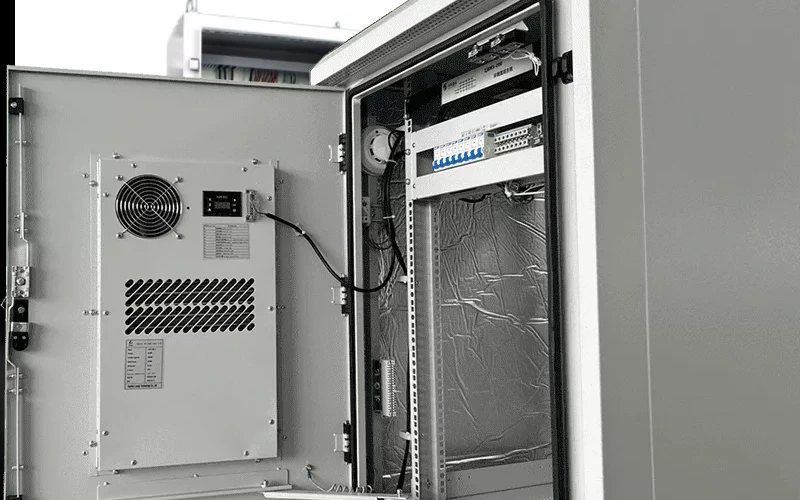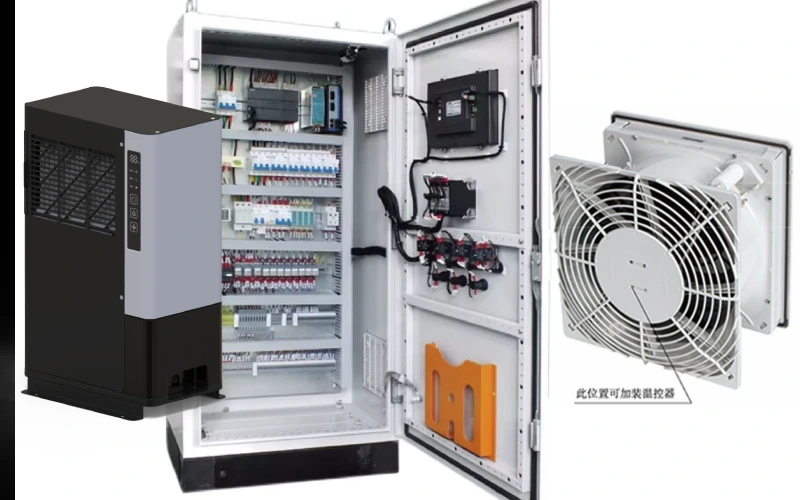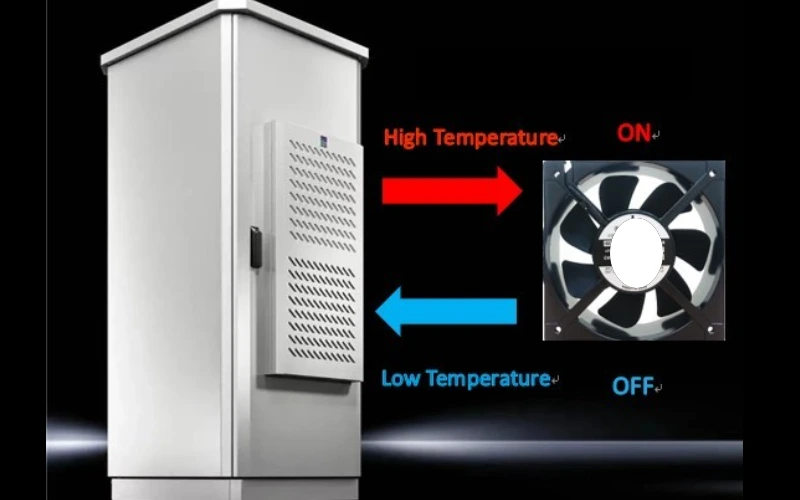If you want to figure out your cpu fan direction, you can use a few simple tricks. Look for arrows on the fan’s side, check the curve of the blades, or spot the sticker on the back. These quick checks work well for beginners. Getting the airflow right helps your system stay cool and quiet. The way blades are shaped and how fast the motor spins can impact both airflow and noise. Some fans push more air, while others create stronger pressure, both important for cooling your computer.
Key Takeaways
- Check for arrows on the fan to easily identify airflow direction. This helps you set up your fan correctly.
- Look at the blade shape: if the blades curve away from you, it’s the intake side; if they curve toward you, it’s the exhaust side.
- Use the sticker on the fan’s hub to find the exhaust side. The sticker usually indicates where the air blows out.
- Test airflow with a piece of paper. If the paper is pulled in, it’s the intake; if it blows away, it’s the exhaust.
- Proper airflow keeps your CPU cool and helps your computer run smoothly. Always double-check fan direction before installation.
Identify CPU Fan Direction
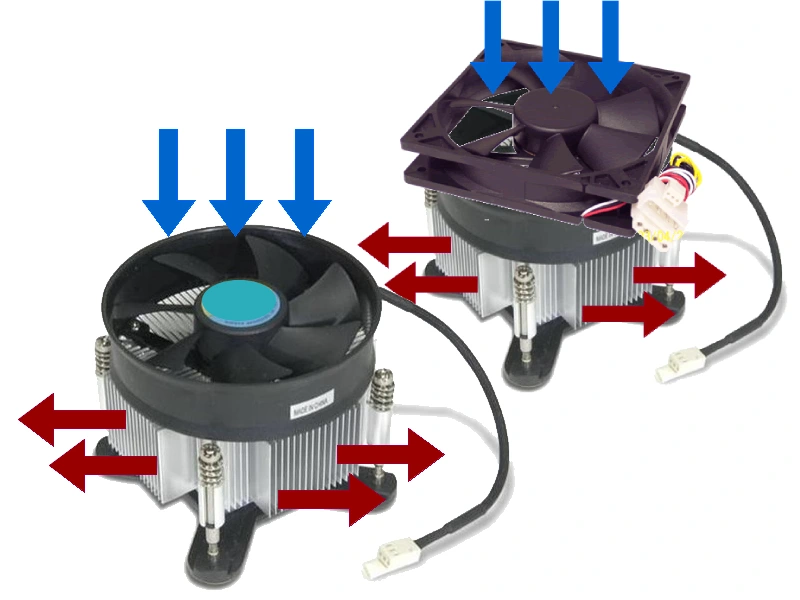
When you want to set up your CPU cooler fan, knowing the right direction of airflow is key. You can use a few simple tricks to figure out the cpu fan direction before you install it. Let’s break down the most common ways to spot which way your fan will blow.
Airflow Arrows
Most modern fans, including the Linkwell Computer Chassis Fan, have small arrows on the side of the frame. These arrows show you both the direction the blades spin and the direction of airflow. You’ll usually find them on the edge of the fan’s plastic housing. If you see two arrows, one points in the direction the blades rotate, and the other points in the direction air will flow through the fan.
Here’s a quick guide to the most common visual indicators:
| Indicator Type | Description |
|---|---|
| Little Arrows | Indicate the direction of fan blade rotation and airflow direction. |
| Horizontally Pointing | Shows the direction in which the fan blades spin. |
| Vertically Pointing | Indicates the direction of the airflow. |
Tip: Always check for these arrows before you install your fan. Linkwell’s Computer Chassis Fan makes this easy with clear, molded arrows on the frame, so you never have to guess.
You’ll notice that most brands, like Linkwell and Noctua, use the same system. The airflow always moves toward the side with the support struts or framework. This makes it easy to match your airflow configuration, whether you want the fan to act as intake or exhaust.
Blade Orientation
If your fan doesn’t have arrows, don’t worry. You can still figure out the pc fan airflow direction by looking at the blades. Stand in front of the fan and check the curve of the blades:
- If the blades curve away from you, you’re looking at the intake side. Air will get pulled in from this side.
- If the blades curve toward you, you’re looking at the exhaust side. Air will blow out from this side.
This trick works for almost every fan, no matter the brand. The side with the open, curved blades is usually the intake, while the side with the support arms is the exhaust. This method helps you set up your fan direction even if you don’t have the manual.
Sticker Position
Another quick way to check cpu fan direction is to look for the sticker on the fan’s hub. Most fans have a label or sticker on one side. The side with the sticker almost always marks the exhaust. So, if you see the sticker, you know air will blow out from that side.
Note: Linkwell’s Computer Chassis Fan follows this standard. The sticker side is the exhaust, which helps you line up your fans for the best cooling.
By using these three methods—arrows, blade orientation, and sticker position—you can always tell which way your fan will move air. This helps you set up the right airflow configuration for your system and keeps your components cool.
Verify Airflow
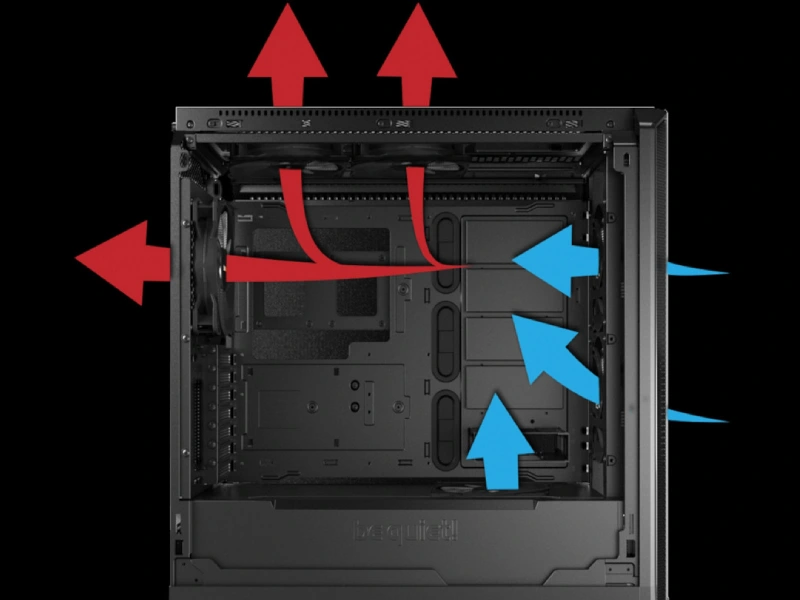
Intake vs. Exhaust
You want your cooling setup to work as efficiently as possible, so it’s important to know the difference between intake and exhaust. Intake means the fan pulls air into your computer case, bringing in cooler air from outside. Exhaust means the fan pushes warm air out of the case, helping remove heat from your system.
When you set up your fans, think about the pressure inside your case. If you have more exhaust than intake, you create a slight negative pressure. This usually doesn’t affect your CPU heatsink fan’s performance much, but it can change how dust moves inside your case. On the other hand, stronger intake fans create a high-pressure zone. This helps absorb more heat and keeps your components cleaner. Positive pressure from intake fans makes sure all the cool air flows through your system and exits, taking heat with it.
Linkwell Computer Chassis Fans are designed for easy installation and verification. You can quickly set them up as intake or exhaust, thanks to clear airflow indicators and universal mounting options. This makes it simple to match your cooling needs and keep your system running smoothly.
Hands-On Test
Not sure about the cpu fan direction? Try a hands-on test before you install the fan. Hardware experts recommend these quick steps:
- Hold a small piece of paper or your hand near the fan while it’s running.
- If the paper gets pulled toward the fan, you’ve found the intake side.
- If the paper blows away from the fan, that’s the exhaust side.
- Always keep the paper away from the blades to avoid damage or injury.
- Feel the direction of airflow with your hand to double-check.
This method works for almost any fan, including Linkwell Computer Chassis Fans. You get instant feedback and can confidently set up your cooling system. These fans make it easy to verify airflow direction, so you don’t have to guess.
Tip: Always test the fan before final installation. You’ll avoid mistakes and keep your system cool.
Why Direction Matters
Cooling Performance
Getting the cpu fan direction right makes a huge difference in how your computer runs. If you set up the fan to blow air the wrong way, your CPU can get much hotter. You might notice your system slows down or even crashes because the heat isn’t leaving the case fast enough. When the fan pushes air toward the CPU instead of away from it, you create turbulence. This stops the heat from escaping and can lead to thermal throttling. Your computer will lower its speed to protect itself, but you lose performance.
Here are some things that can happen if you don’t pay attention to the direction of airflow:
- Your CPU temperature goes up because heat stays trapped.
- The fan should pull air away from the heatsink for the best cooling.
- You might see a temperature drop of 4°C just by flipping the fan.
- High temperatures can cause your system to slow down or become unstable.
Keeping the right airflow helps your CPU stay cool and your system run smoothly. If you use a high-quality fan like the Linkwell Computer Chassis Fan, you get better heat dissipation and lower noise. Linkwell uses top-grade bearings and smart air duct designs. These features help direct cold air to hot spots and push warm air out, so your computer stays at a safe temperature.
| Aspect | Benefit |
|---|---|
| Airflow Direction | Keeps CPU and other parts cooler, which helps them last longer. |
| Thermal Management | Good cooling means your computer works better for a longer time. |
| Heat Dissipation | Fans like Linkwell’s keep temperatures below 80°C, protecting nearby components. |
| Case Temperature Regulation | Lower case temps can even help your SSDs last longer. |
Installation Tips
You want your cooling setup to work right from the start. Here are some easy tips to make sure your fans are set up for the best airflow:
- Check for arrows on the fan casing. These show you the direction of airflow and blade rotation.
- Put front fans in as intake to bring cool air into the case.
- Set top and rear fans as exhaust to push hot air out.
- Make sure the fan’s power cable is plugged in tight.
- Keep cables neat so they don’t block airflow.
- Clean dust off your fans and components often.
- Watch for any strange noises or slow fan speeds.
The design of your computer case also matters. Some cases move air better than others. If you use a server rack, make sure warm air doesn’t get pulled back in. Linkwell’s fans use high-quality bearings and smart designs to keep air moving efficiently. You get reliable cooling and less downtime.
Tip: Always double-check the cpu fan direction before you finish installation. A few minutes now can save you hours of troubleshooting later.
You can figure out your CPU fan direction in just a few steps. First, check the blade shape and look for arrows on the frame. Next, use a piece of paper to test airflow. The sticker side usually marks the exhaust. Before you install, run through this quick checklist:
- Choose the right fan for your setup.
- Gather your tools and thermal paste.
- Attach the fan with the correct orientation.
- Test the fan’s operation.
Good airflow keeps your system cool and running longer. For reliable cooling, try Linkwell Computer Chassis Fans—they make setup easy and efficient.
FAQ
How do I know if my CPU fan is set up as intake or exhaust?
You can check the arrows on the fan frame. Intake pulls air in. Exhaust pushes air out. The sticker side usually means exhaust. Hold a piece of paper near the fan to see which way the air moves.
Can I use any fan for my CPU cooler?
Not every fan works well for cooling your CPU. You should pick a fan with good airflow and low noise. Linkwell Computer Chassis Fans offer high performance and easy installation for most setups.
What happens if I install my CPU fan backwards?
Your CPU may get hotter. The system might slow down or crash. Always check airflow direction before you finish installation. A quick test can save you trouble later.
Do I need to clean my CPU fan often?
Yes, you should clean your fan every few months. Dust can block airflow and raise temperatures. Use compressed air or a soft brush. Keep your system running cool and quiet.

